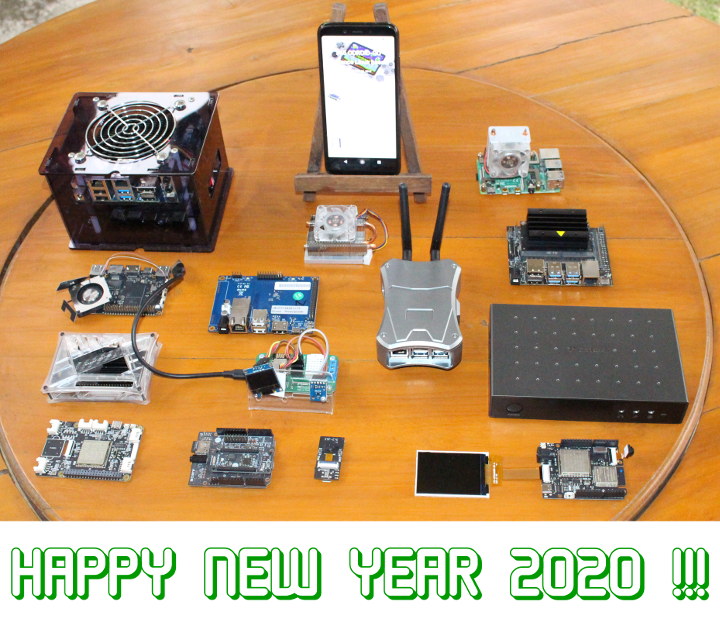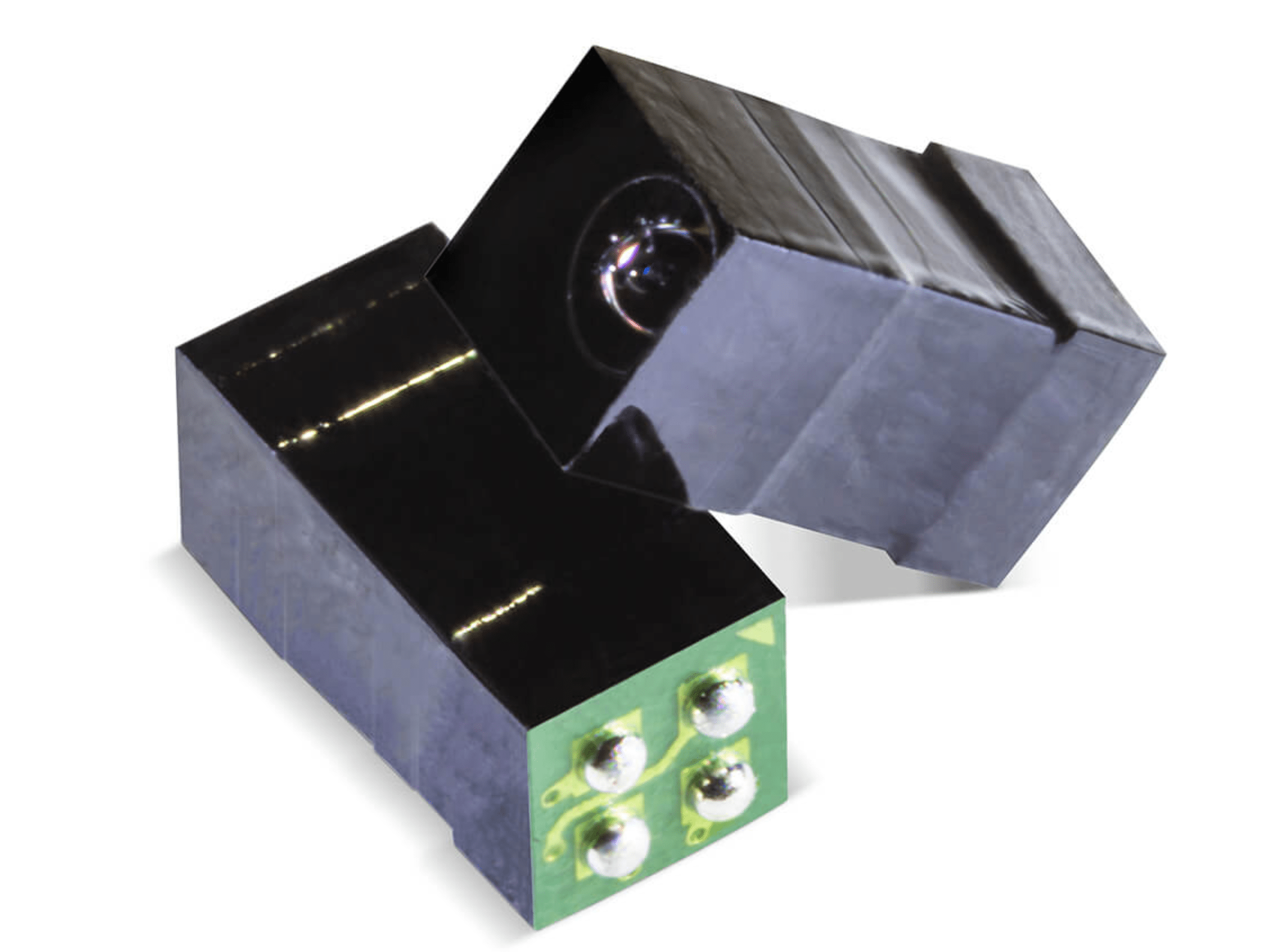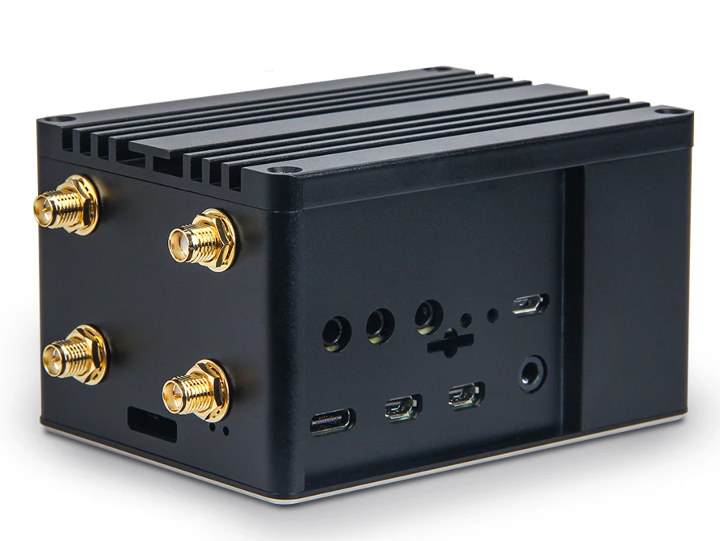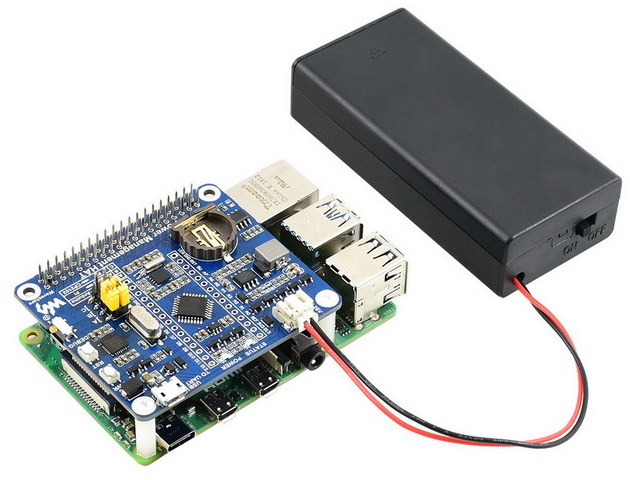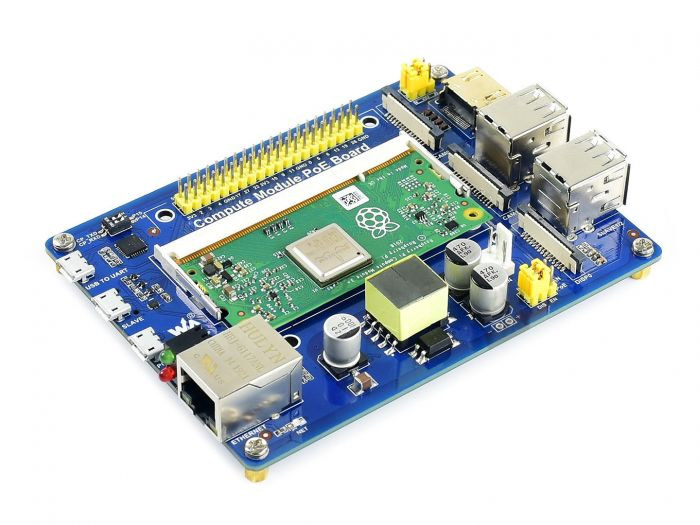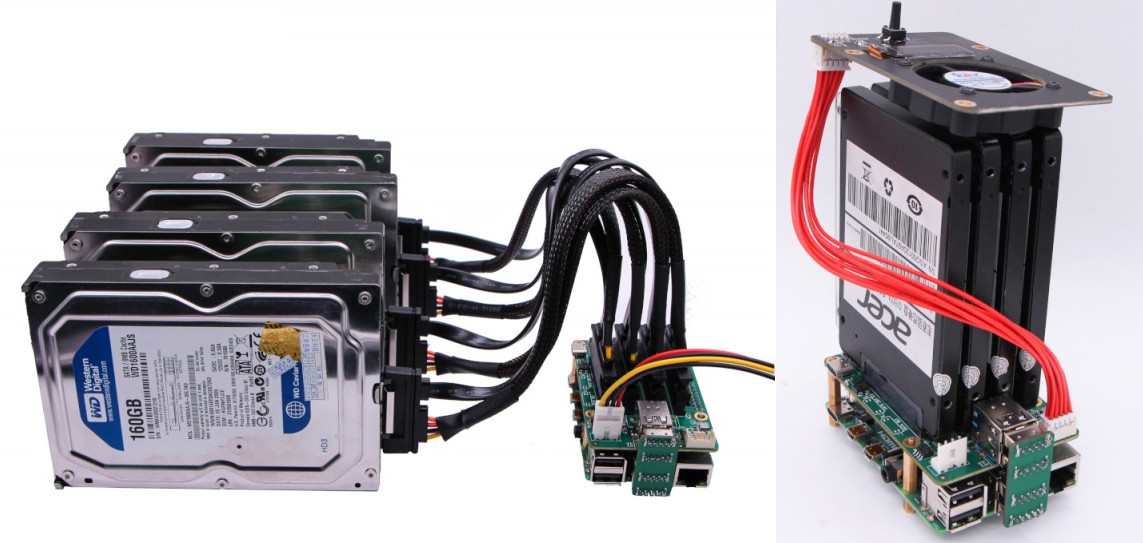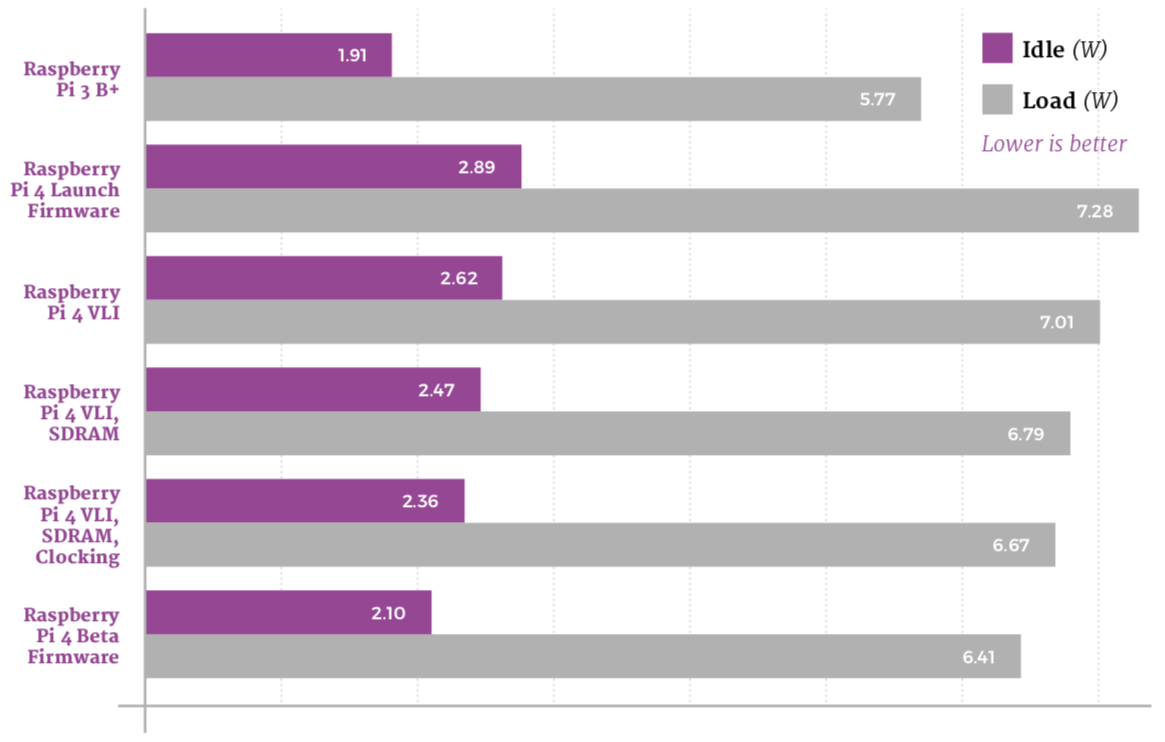2019 is closing to an end, or you may already be into 2020 while reading this post. In any case, that means it’s time to look back at 2019 and look forward to the events and new products to take place next year. While 2018 was a boring year for new processors, 2019 brought us some interesting new chips such as Amlogic S922X / A311D, or the first Arm Cortex-A55 only processors such as Amlogic S905X3. Rockchip RK3399Pro was promising when it was announced last year, but it never really took off. It was a pretty quiet year for Allwinner as well. RISC-V architecture has been ramping up with the first general-purpose RISC-V MCU: GD32V, WCH CH572 Bluetooth LE MCU, the launch of more SiFive RISC-V cores, and Kendryte K210 RISC-V AI processor announced last year has found its way into more and more boards. There have also been the […]
NanoVision & NanoBerry Miniature Computer Vision Evaluation Kits Released For Arduino & Raspberry Pi Platforms
AMS (Austria Mikro Systeme) known for their array for micro sensing solutions and most importantly the NanEye, a Miniature CMOS image sensor which is designed for applications where size is a critical factor has also launched a set for evaluation kits called the NanoVision and the NanoBerry for the development of solution based on the AMS NanEyeC miniature image sensor. NanEyeC Camera Sensor The NanEyeC comes in a footprint of just 1mm x 1mm surface mount, and it can produce 100kpixel resolution up to 58 frames/s. It seems the NanEyeC is based on the NanEye series, which typical (NanEye) features a 249×250 resolution with a high sensitive 3um x 3um rolling shutter pixel and capable of a high frame rate of about 43fps to 62fps. The NanEyeC sensor is based on the high-speed LVDS data interface. The sensor is assembled with a unique lens and cover glass, which fits in […]
Some Interesting Talks from FOSDEM 2020 Schedule
We wrote about IoT devroom call for proposals for FOSDEM 2020 a little while ago, and as the free open-source developer meetup is getting closer, FOSDEM 2020 organizers released the schedule. So I’ll look at some of the talks in the relevant devrooms such as the Internet of Things, hardware enablement, Embedded, Mobile and Automotive, as well as RISC-V and others to compose my own little virtual schedule for the 2-day event. Saturday, February 1 10:30 – 10:50 – How lowRISC made its Ibex RISC-V CPU core faster – Using open source tools to improve an open-source core – by Greg Chadwick Ibex implements RISC-V 32-bit I/E MC M-Mode, U-Mode, and PMP. It uses an in-order 2 stage pipe and is best suited for area and power-sensitive rather than high-performance applications. However, there is scope for meaningful performance gains without major impact to power or area. This talk describes work […]
RAK7244 LoRaWAN Developer Gateway Combines Raspberry Pi 4 with LoRa HAT, Optional 4G LTE Connectivity
After launching RAK831 Lite LoRaWAN gateway based on Raspberry Pi 3 board in 2018, RAK Wireless introduced Pilot Gateway Pro RAK7243 gateway with the more recent Raspberry Pi 3B+ SBC earlier this year. But with the launch of Raspberry Pi 4 last June, the Raspberry Pi 3B+ has become much harder to procure, so RAK has now launched an updated LoRa gateway featuring Raspberry Pi 4 SBC together with the company’s RAK2245 Pi Hat Edition LoRaWAN gateway concentrator module. RAK7244 LoRaWAN Developer Gateway specifications: SBC – Raspberry Pi 4 Model B with 2GB RAM Connectivity LoRa RAK2245 Pi Hat LoRaWAN gateway concentrator module with 1x SX1301 baseband processor, 2x SX125x Tx/Rx front-ends LoRaWAN v1.0.2 support Support for 8 channels and spreading factors SF7 to SF12 Bands – 433MHz, 470MHz, 865MHz, 868MHz, 915MHz, 920MHz, 923MHz Tx Power: 27 dBm Max RX Sensitivity: -139dBm Cellular – Optional 4G LTE support via RAK2013 […]
Raspberry Pi Power Management HAT Adds RTC, Battery Management, Software On/Off
If your Raspberry Pi project runs on battery, but may not need to be turned on 24/7 in order to lower power consumption, you’d have to find a way to schedule on and off times, and power off the board cleanly either when the battery is almost depleted, or your timer requires it There’s no built-in support for this in any of the Raspberry Pi boards, but Waveshare Power Management HAT can help you do just that since it adds an RTC, and enables software-controlled power timers and battery monitoring via an Arduino compatible ATmega328 MCU. Power Management HAT specifications: MCU – Microchip ATmega328P-AU MCU Storage – CAT24C32 EEPROM USB – 1x micro USB port for serial communication via CP2102 UART to TTL chip RPi Interface – 40-pin Raspberry Pi GPIO header Misc NXP PCF8523 RTC & calendar chip + CR1220 battery holder DEBUG switch (9) to either: Power directly […]
$38 Compute Module PoE Board Works with Raspberry Pi CM3/CM3+ Modules
Raspberry Pi 3 Compute Module was first introduced in 2017 with CM3 and CM3L systems-on-module with or without 4GB eMMC flash for $25 and up before the company launched an update earlier this year with CM3+ modules equipped with a slightly faster processor and up to 32GB eMMC flash for $25 to $40. If you wanted to evaluate the solution for your project you’d have to spend well over $100 for either the official development kit or third-party solutions such as balenaFin which may not support all features of the modules out of the box. We previously wrote about Waveshare Compute Module IO Board Plus similar to the official devkit and going for $50 without the actual module. The company has now designed a more compact board that also supports Ethernet and PoE out of the box selling for just $37.99 plus shipping on Seeed Studio or Waveshare not including […]
ROCK Pi SATA HAT Targets ROCK Pi 4 & Raspberry Pi 4 NAS
Radxa ROCK Pi 4 is a single board computer (SBC) powered by Rockchip RK3399 hexa-core processor and inspired by Raspberry Pi 3 Model B+. The company has now designed ROCK Pi SATA HAT expansion board to design 4-bay NAS based on Raspberry Pi 4 and ROCK Pi 4. There are 3 models with support for 2, 4 or 5 drives: Dual/Quad SATA HAT connected over two USB 3.0 ports and working with both boards Penta SATA HAT connected over PCIe and compatible with ROCK Pi 4 only ROCK Pi Dual/Quad SATA HAT Specifications: 2x or 4x SATA connectors supporting 2.5″ or/and 3.5″ HDD/SSD 2x USB 3.0 port to connect to RPi 4 via one or two JMS561 USB to SATA controllers Storage Features – HDD suspend mode, UASP, software RAID 0/1/5 Misc Fan and heatsink header for Raspberry Pi 4 CPU cooling Optional PWM control fan for HDD heat dispatching […]
Run Raspberry Pi 4 Cooler with a New Firmware & One Easy Trick
Raspberry Pi 4 launched last June with a lot of buzz as it offered much better performance, more memory, and faster I/Os compared to Raspberry Pi 3 model B+. Benchmarks confirmed the improved performance but also revealed a heatsink was necessary to ensure optimal performance under heavy loads. Some companies also launched an oversized heatsink+fan combo for the board, but it’s really over the top and absolutely not necessary unless possibly in higher room temperature (50°C?). The Raspberry Pi Foundation also worked on improving the video to lower CPU temperature and power consumption, and a few days later released a beta version of VLI firmware that dropped the temperature by 3 to 5°C. Good effort but sadly the updated VLI firmware (used for the PCIe to USB controller) also had the side-effect of much slower USB performance. A new VLI firmware was released in September offering both a lower temperature […]


